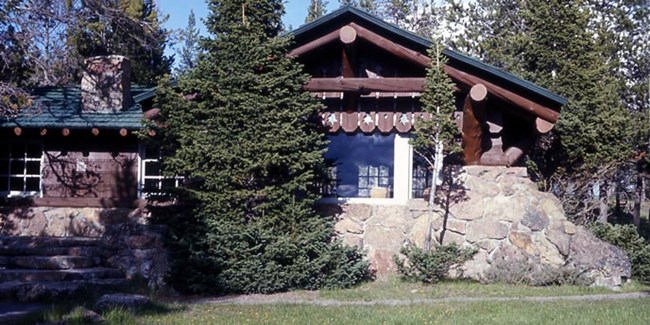
NPS Visit the Madison Information StationThe Madison Information Station dates from 1929–30 and is a National Historic Landmark. Located at Madison Junction, it is built from wood and stone materials. In previous years, this building has been used as a museum, has housed the Arts Yellowstone program, and has sat empty and abandoned. It began its new life as an information station and bookstore during the summer of 1995. The rustic station contains touch-table exhibits and is staffed by a ranger. 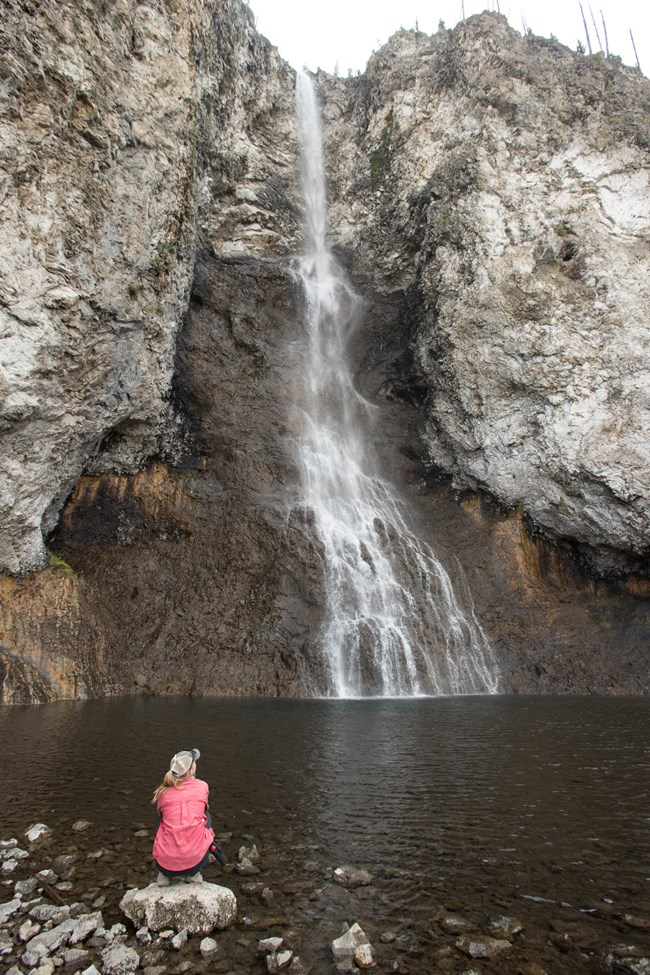
NPS/Jim Peaco Take in the Splendor of Fairy FallsTwo different trailheads lead to Fairy Falls, which at 200 feet (61 m) high is one of Yellowstone's most spectacular waterfalls. The northern trailhead starts at the end of the Fountain Flat Drive and follows an old road across meadows and near hydrothermal features. This is a 6.7-mile (10.7-km) hike. The southern trailhead starts at the Fairy Falls parking area and follows an old road along the edge of the Midway Geyser Basin. This is a 5.4-mile (8.6-km) hike. Also along this trail is the side-hike up to the Grand Prismatic Overlook Trail to a wonderful view of Grand Prismatic Spring and the rest of the Midway Geyser Basin. Fish the Madison and Firehole RiversThe Firehole River starts south of Old Faithful, runs through the Upper Geyser Basin northward to join the Gibbon River and form the Madison River. The Madison joins the Jefferson and the Gallatin rivers at Three Forks, Montana, to form the Missouri River. The Madison is a blue-ribbon fly-fishing stream with brown and rainbow trout and mountain whitefish. Meanwhile, the Firehole River is world-famous among anglers for its pristine beauty and abundant brown, brook, and rainbow trout. 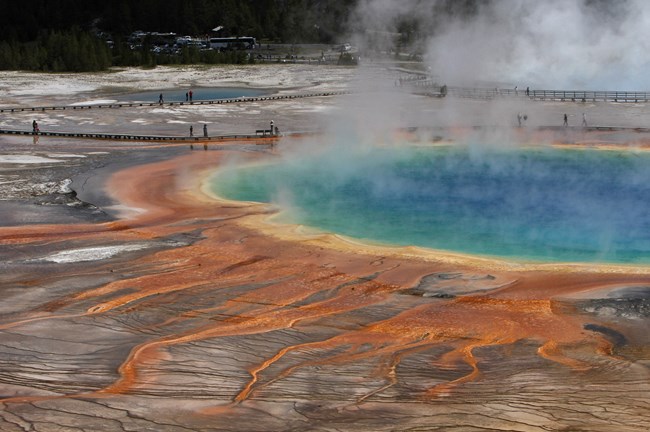
NPS/Jim Peaco Tour Hydrothermal WondersThere are a lot of hydrothermal wonders to discover in this region, from small geysers and fumaroles to more well-known mudpots and hot springs. This is also a popular area in the summertime, so be prepared for crowded parking areas, or plan to visit during off-hours. Terrace SpringsTerrace Springs is a small thermal area just north of Madison Junction where a short boardwalk leads out to hot springs. Fountain Paint PotFountain Paint Pot is a popular stop where you can take in all four of the park's major hydrothermal features: fumaroles, geysers, hot springs, and mudpots. Fountain Paint Pot is one of the more famous mudpots in the park. Firehole Lake DriveNext to Fountain Paint Pot is the Firehole Lake Drive, one of the park's nice little side-drives. This drive leads you past many hydrothermal features, including Great Fountain Geyser and White Dome Geyser. Midway Geyser BasinFurther to the south is Midway Geyser Basin, home to perhaps the most photographed hot spring: Grand Prismatic Spring. Next to Grand Prismatic Spring is the massive steaming crater of Excelsior Geyser, which back in the late 1800s was still erupting over 300 feet (91 m) into the air. Today, Excelsior Geyser is considered dormant. 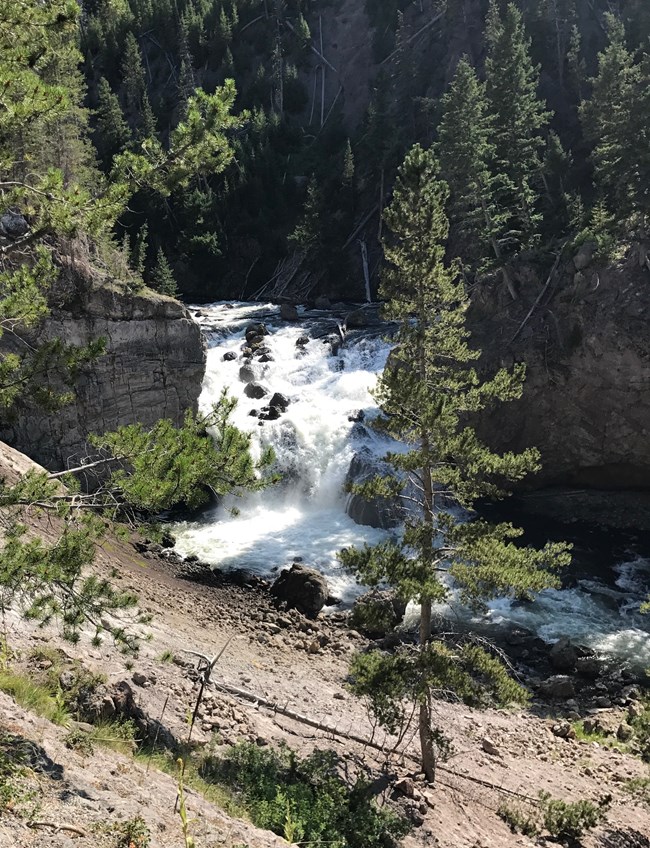
NPS/Dave Krueger Drive Through Firehole Canyon
Firehole Canyon Drive follows the Firehole River upstream from Madison Junction to just above Cascades of the Firehole. The drive takes you past 800-foot thick lava flows and to a viewing area of Firehole Falls, a 40-foot (12.2-m) waterfall. Also along the drive is an unstaffed swimming area, which is very popular in the warmest part of the summer season. Learn more about the hazards of swimming and soaking in Yellowstone. Stay Here (or Close By)This region is home to Madison Campground, one of the larger campgrounds in the park and one that opens earlier in the spring and closes later in the fall than the other seasonal campgrounds. For many other options, the town of West Yellowstone, Montana is right at the west entrance of the park. 
Camping
Park campgrounds are reserved and full far in advance—plan ahead for a successful visit! 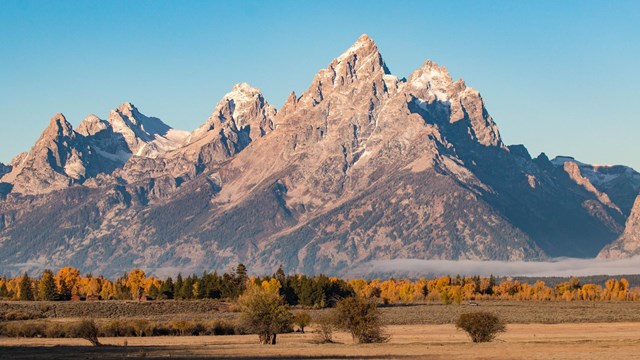
Nearby Attractions
Discover lodging and camping options outside the park. Madison Frequently Asked QuestionsHere, the Gibbon River joins the Firehole River to form the Madison River. The Gibbon River flows from Grebe Lake through the Norris area to Madison Junction. The Firehole River starts south of Old Faithful and flows through the park's major hydrothermal basins north to Madison Junction. The Madison joins the Jefferson and the Gallatin rivers at Three Forks, Montana, to form the Missouri River.
Part of what you see is the rim of the Yellowstone Caldera, plus lava flows. National Park Mountain is actually part of the lava flows. Some of these lava flows come down to the road through Firehole Canyon, approximately one mile south of Madison Junction. Gibbon Falls, four miles north of the junction, drops 84 feet (25.6 m) over a remnant of the caldera rim.
Seven Mile Bridge is located midway between (and seven miles from both) the West Entrance and Madison Junction. This landmark serves as a convenient reference point and separates the rugged lava-lined Madison Canyon east of the bridge from gentle hills to the west.
South of Madison Junction is the entrance to the Firehole Canyon Drive, a one-way route that follows the Firehole River. Along this route are views of the Firehole Falls and a swimming area where the water is influenced by thermal activity below the surface. Swimming is undertaken at your own risk. Please note that climbing the cliffs around the swimming area erodes the thin topsoil and damages area habitat. Jumping from the cliffs is very dangerous and is forbidden.
During the fall rut, elk frequent the meadows from Seven Mile Bridge to Madison Junction. During spring, fall, and winter, herds of bison favor the meadows adjacent to the Madison and Gibbon rivers. Bison often use the entrance road to travel from one foraging area to another. In summer, they move to Hayden Valley, their traditional summer habitat and breeding area. Bald eagles have nested west of Seven Mile Bridge in recent years. Several pairs of ospreys also nest along the Madison. You might also see trumpeter swans, Canada geese, mallards, Barrow's goldeneyes, and other water birds. The legend, which you can read about at the Madison Information Station, tells of explorers camping here in 1870 and deciding Yellowstone should be set aside as a national park. It is a wonderful story, but it isn't true. Explorers did camp at the junction in 1870, but they apparently did not discuss the national park idea. They camped in a location where people have camped for centuries. Archeologists have found campfire remnants, obsidian flakes, and bone fragments dating back at least 10,000 years. 
Madison Hikes
Hikes in the Madison area meander through conifer forest. 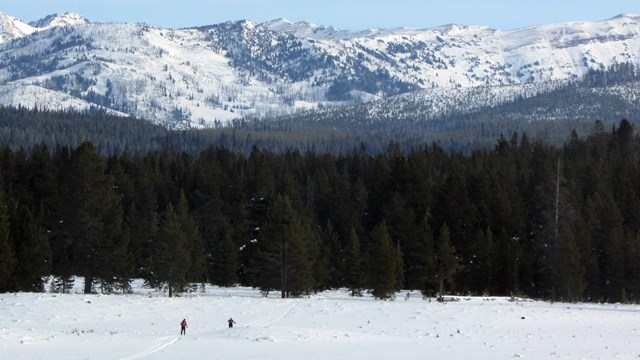
West Yellowstone Trails
Discover skiing and snowshoeing opportunities in the West Yellowstone/Gallatin area. 
Accessibility
Discover Yellowstone's accessibility resources like the NPS Mobile App, Access Pass, and assistive services. 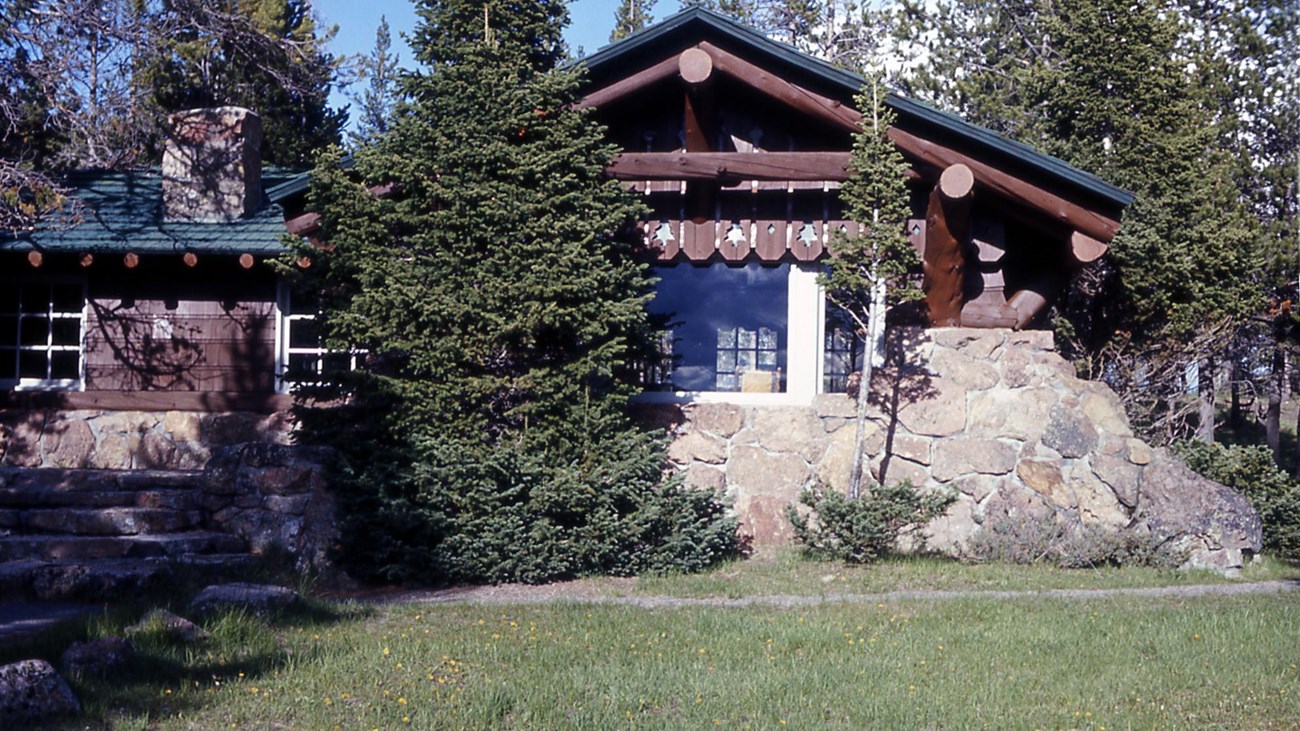
Madison Information Station
Stop by the Madison Information Station for park information, a ranger program, or to enjoy views of the Madison River. 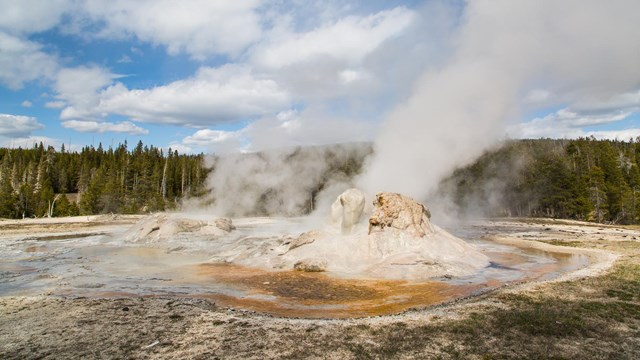
Places To Go
Discover the highlights of Yellowstone's vast 2.2 million acres, ten visitor centers, and eight developed areas. 
Plan Your Visit
Yellowstone changes with the seasons—make the most of your visit! Plan ahead to keep your trip safe, fun, and unforgettable. |
Last updated: June 2, 2025
